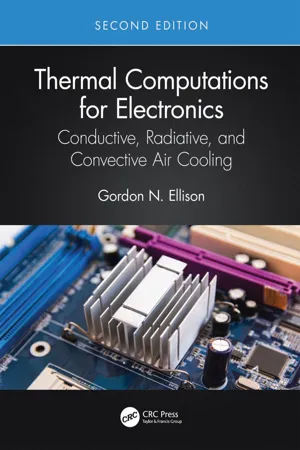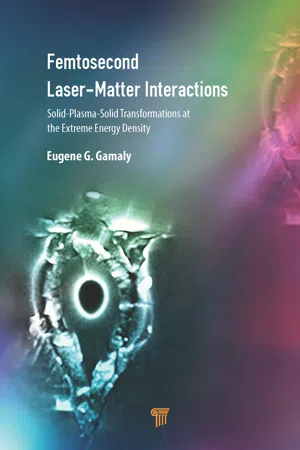Drude Model
The Drude model is a simple classical theory used to describe the electrical and thermal conductivity of metals. It assumes that electrons in a metal behave like a gas of free particles that collide with ions, leading to electrical resistance and thermal conductivity. The model provides a basic understanding of electron behavior in metals and forms the basis for more advanced quantum mechanical theories.
4 Key excerpts on "Drude Model"
- eBook - ePub
Understanding Solids
The Science of Materials
- Richard J. D. Tilley(Author)
- 2021(Publication Date)
- Wiley(Publisher)
...The effective mass is not a constant, but depends upon temperature and the direction in the crystal that the electron is travelling. It is invariably expressed as a fraction of the electron rest mass m e, i.e. 0.067 m e.) The current in a conductor is steady, and not ever increasing, as would be expected if the electrons were accelerating. To account for this, it is assumed that the electrons constantly collide with the atoms and defects in the material and that each collision resets the drift velocity to zero. In this case the current will decay to zero in a time τ, the relaxation time, after the voltage is turned off, where τ is equivalent to the time between successive collisions. The mean free path of the electron, which is the length of the path between successive collisions, is given by: where is the electron velocity at the Fermi surface. In addition, the drift velocity of the electrons is: Substituting for the acceleration from Eq. (11.1) (11.2) The total current flowing is therefore: If the length of the conductor is L, the electric field can be replaced by V / L, where V is the voltage applied to the conductor, to give: Ohm's law can be written: so that: (11.3) where σ is the conductivity and ρ the resistivity of the solid. The conductivity is often written in terms of another variable, the mobility of the electrons, μ e, defined as the drift velocity gained per unit electric field, that is: Comparing this with Eq. (11.2) makes it apparent that: This is sometimes called the drift mobility, to distinguish it from mobility measured via the Hall effect (Section 11.2.5). The conductivity and the mobility are then related by substituting Eq. (11.3) into (11.2) to give: 11.1.3 Resistivity Scattering is the main cause of resistivity. The electron wave can be scattered by interaction with phonons (lattice vibrations), called thermal scattering. As the temperature increases so do the lattice vibrations, and the resistivity rises...
- eBook - ePub
Thermal Computations for Electronics
Conductive, Radiative, and Convective Air Cooling
- Gordon N. Ellison(Author)
- 2020(Publication Date)
- CRC Press(Publisher)
...The defect portion dominates conduction from the lowest temperature region up to the vicinity of the conductivity maximum. The purer the metal, the greater the peak, i.e., the maximum conductivity decreases as defects and impurities are added to the metal. The effects of defects and lattice scattering are equal at the temperature where the conductivity maximum occurs. The lattice scattering term dominates at temperatures from the conductivity maximum and greater and as we have seen, the conductivity changes little from about 100 to 300K. It is usually very difficult to fit a single formula such as Eq. (11.31) over the full range of 4 to 300K, but it is usually possible to fit k (T ′) up to something less than room temperature, e.g., 100K for copper. Figure 11.19. Temperature dependence of some common materials. Data from a variety of sources. Figure 11.20. Temperature dependence of copper with imperfections at low temperature. The filled circles are data from Childs et al. (1973). Heat conduction in a nonmetallic, crystalline material is due to transfer of the lattice vibrational energy from a higher to a lower temperature. Solid state physicists describe the vibrational nature in terms of a quantized quantity called a phonon. Just as electromagnetic propagation can be described by photons, vibrational energy in a crystal can be described by phonons. The resistance to thermal energy transfer by phonons in the lattice is largely due to two mechanisms: (1) geometrical scattering of the phonons from the crystal boundary and also from lattice imperfections; and (2) scattering of phonons by other phonons. It can be shown that if the forces between atomic entities in the crystal are those of a harmonic oscillator, i.e., the restorative force is F = – a Δ x, then there is no mechanism for collisions between different phonons and the thermal resistivity is determined only by collisions of a phonon with a crystal boundary or imperfection...
- eBook - ePub
Femtosecond Laser-Matter Interactions
Solid-Plasma-Solid Transformations at the Extreme Energy Density
- Eugene G. Gamaly(Author)
- 2022(Publication Date)
- Jenny Stanford Publishing(Publisher)
...Chapter 2 Interaction with Metals The material and optical properties of solids under the intense light beam action are changing in the process of interaction affecting in turn the electric field inside a solid. Ideally, the interaction should be described by the coupled set of the Maxwell and material equations accounting for the modification of the material properties interconnected with the field changes: ∇ × ∇ × E = − 1 c 2 ∂ 2 D ∂ t 2 D = ε E d i v D = 0 ε = ε v a l + ε c o n d (2.1) The dielectric permittivity in general includes the contribution of valence and conduction band electrons. Both contributions are important in the intense laser-affected dielectrics. However, the permittivity in metals is well described in the Drude approximation when the contribution of conduction electrons is dominant. The number density of the conductivity electrons can be considered constant during the interaction time shorter of the major relaxation processes and with a fluence range up to the ablation threshold, It is not the case for the semi-metals. Indeed, in Bi, the number density of the electrons in the conduction band increases even during the melting as we show later in the book. However, even for good metals such as gold and silver, where d -electrons are close to the Fermi surface, the ablation thresholds are well described under assumption of the unchanged number density of the conduction electrons (see Chapter 5). Probably, in this case the laser intensity (in a range of a few TW/cm 2) is not high enough to affect the state of d -electrons. The major changes of the permittivity in the laser-affected metals are related to the modification of the effective collision rate of the electrons along with the increased intensity of the laser. The effect on the optical properties relates to the changes in the momentum transfer rate from electron to the rest of the medium. The energy transfer is controlled by the energy transfer rate...
- eBook - ePub
Principles of Solar Cells, LEDs and Diodes
The role of the PN junction
- Adrian Kitai(Author)
- 2011(Publication Date)
- Wiley(Publisher)
...Electrons in the lowest-lying atomic orbitals will remain virtually unaltered since there is virtually no spatial overlap of these electrons in the crystal. The picture we have presented is conceptually a very useful one and it suggests that electrical conductivity may arise in a crystal due to the formation of spatially extended electron states. It does not directly allow us to quantify and understand important details of the behaviour of these electrons, however. We need to understand the behaviour in a solid of the electrons that move about in the material. These mobile charge carriers are crucially important in terms of the electrical properties of devices. An electron inside an infinitely large vacuum chamber is a free electron, but a mobile electron in a solid behaves very differently. We can obtain a more detailed model as follows. The mobile electrons in a crystalline semiconductor are influenced by the electric potential in the material. This potential has a spatial periodicity on an atomic scale due to the crystal structure. For example, positively charged atomic sites provide potential valleys to a mobile electron and negatively charged atomic sites provide potential peaks or barriers. In addition, the semiconductor is finite in its spatial dimensions and there will be additional potential barriers or potential changes at the boundaries of the semiconductor material. The quantitative description of these spatially extended electrons requires the use of wavefunctions that include their spatial distribution as well as their energy and momentum. These wavefunctions may be obtained by solving Schrödinger's equation. The following section presents a very useful band theory of crystalline solids and the results. 1.3 The Kronig–Penney Model The Kronig–Penney model is able to explain the essential features of band theory. First, consider an electron that can travel within a one-dimensional periodic potential V (x)...



